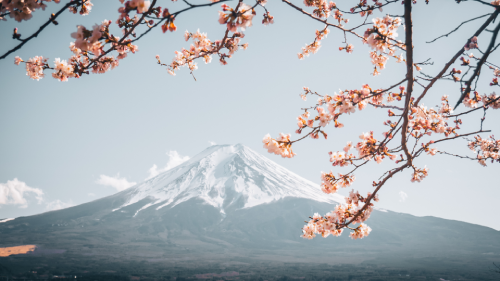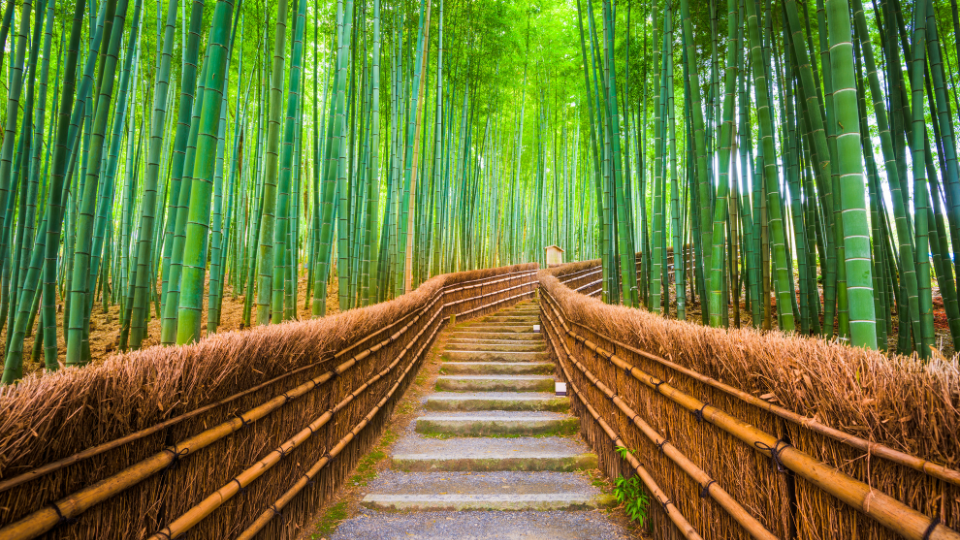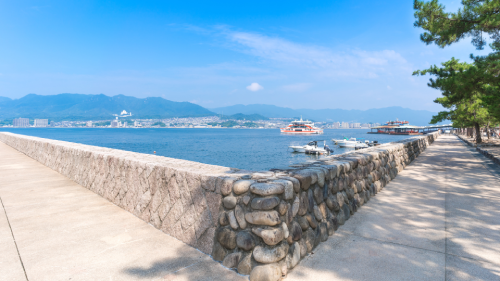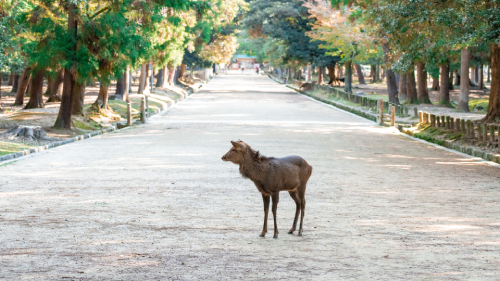
Japan is a country rich with diverse landscapes, bustling cities, and unique cultural experiences. It is filled with breathtaking destinations that are sure to leave you awestruck. This list showcases just a small selection of the beautiful places in Japan, and it is a work in progress as I hope to visit this country soon. I would appreciate it if you could share your insights with those who live or have visited Japan and suggest some incredible places to see in the comments.
Here are the destinations in Japan that captured my heart and left a profound impact on me. These are the places that exuded beauty and charm, further increasing Richard Uzelac’s fondness for this incredible country.
Kyoto
There is no doubt that Kyoto is one of the most beautiful places to visit in Japan. Its inviting mix of nature and traditional architecture, along with temples and shrines scattered throughout the city, nestled among picturesque gardens brightened by cherry blossoms in the spring and red maple leaves in the fall.

Arashiyama
If you love nature and wildlife, then Arashiyama in Kyoto is an especially enjoyable district to visit. The forested hills not only make an attractive setting for temples, tea houses, and riverside parks, but the area is also home to the Iwatayama Monkey Park and Kyoto’s famous bamboo grove.

Miyajima Island
Miyajima Island is located in Hiroshima Bay. It has been recognized as one of the Three Most Scenic Spots in Japan for centuries. The island boasts miles of picturesque coastlines and mountain trails that offer stunning views of the Seto Inland Sea. A hike up Mt. Misen provides the opportunity to visit two observatories, allowing visitors to appreciate the island’s gorgeous setting.
The island is home to several spiritual sites characterized by traditional Japanese architecture. One of the most remarkable is Itsukushima Shrine, distinguished by its vermilion color and unique construction on wooden pilings. This design gives the impression that the shrine is floating in the sea during high tide.
However, the most captivating sight on Miyajima Island is the sunset behind the Great Torii. This iconic structure stands in the sea and is illuminated by warm, golden light, creating a truly enchanting and magical scene.

Nara
Nara is a city in Japan known for its rich history, cultural heritage, and natural beauty. It is indeed considered a beautiful place to live for several reasons.
One of the prominent attractions in Nara is its large population of freely roaming deer. These friendly deer have become a symbol of the city and are protected as a national treasure. Living in Nara means having the opportunity to interact with these gentle creatures on a daily basis, adding a unique and charming element to everyday life.
Nara is also home to numerous UNESCO World Heritage sites, including the famous Todaiji Temple. This temple houses the Great Buddha, a massive bronze statue that is one of Japan’s most important cultural treasures. The serene beauty of these historical landmarks, surrounded by tranquil gardens and park areas, creates a peaceful and picturesque atmosphere throughout the city.

A Guide to Becoming an Expat in Japan by Richard Uzelac
Living and working as an expat in Japan can be a really exciting and rewarding experience, especially for individuals under 30. To make this dream a reality, there are several important steps and considerations to keep in mind.
Visa Requirements: Obtaining a visa is crucial for living in Japan. For those under 30, the most accessible option is the Working Holiday Permit (WHP), allowing you to reside and work in Japan for up to one year. However, it’s important to note that the WHP has certain limitations on the types of employment permitted.
Work Visas: In most cases, expats will require a work visa. There are various visa types available, including Engineer visas for technology and engineering roles, Investor visas for managers and entrepreneurs, Mutation visas for company transfers, Specified Skills 1 and 2 visas for specific industries, Humanities Expert visas for teaching and translation, and Permanent Resident visas for long-term residents.
Certificate of Eligibility (CoE): A CoE issued by your employer is a crucial document in the visa application process. It is required to obtain a work visa and serves as an intermediary step.
Additional Documents: Depending on the visa type, additional documents may be necessary, such as a work contract or a certificate from the Japanese Language Proficiency Test (JLPT) to demonstrate language proficiency.
Residence Permit: After receiving your visa, you must apply for a residence permit that will indicate the length of your stay and the type of job you are allowed to engage in while in Japan.
Special Programs: There are specific programs designed to facilitate the expat process in Japan. Notable examples include the ETP (European Training Programme) and the JET (Japan Exchange and Teaching) programs. The ETP program offers language and management courses along with internships in Japan, while the JET program focuses on teaching opportunities and language proficiency.
Japan also provides visa options for retirees and individuals of other age groups. The “Designated Activities” visa, for example, allows non-working stays in Japan and requires meeting specific financial and insurance requirements.
To pursue your journey as an expat in Japan, it is recommended to consult the respective program websites or contact relevant authorities for detailed information on application requirements and deadlines. With the right preparation and determination, Japan offers a wealth of opportunities for young individuals seeking an enriching international experience.
